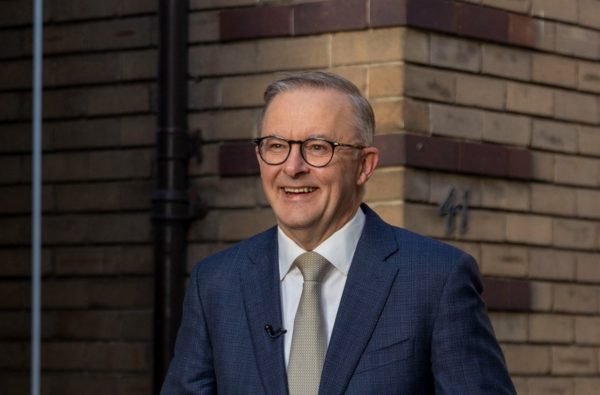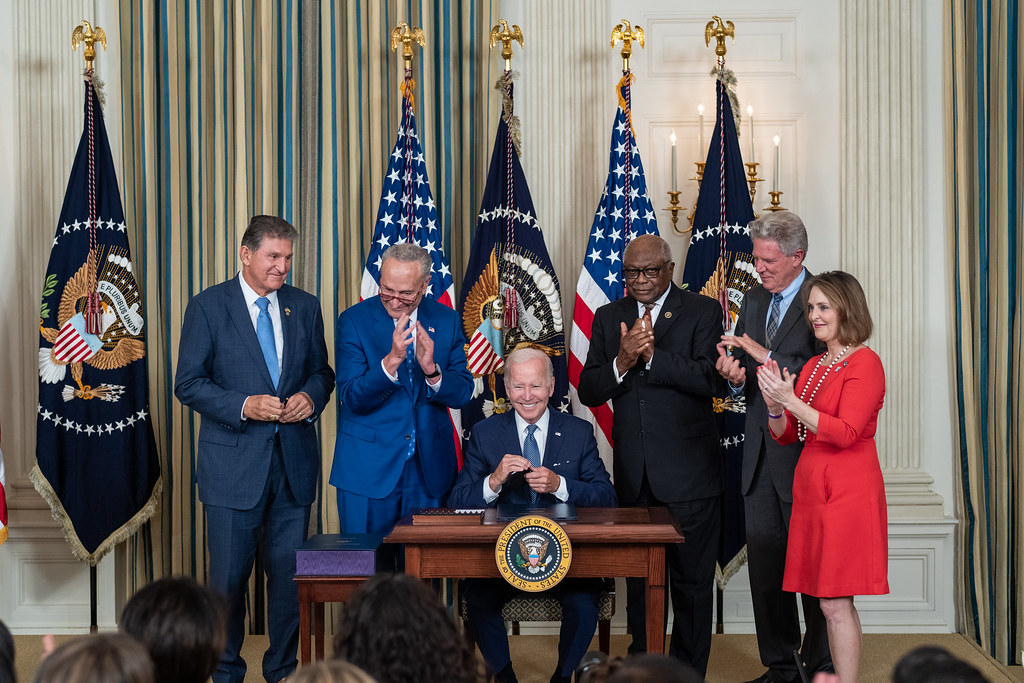US President Joe Biden signed the $369 billion Inflation Reduction Act (IRA) into law in August 2022 and changed the face of the global energy transition.
The IRA is the largest climate and energy spending package in US history. The bill not only expands incentives to deploy clean energy toward emission-reduction goals, but includes new production incentives for domestic solar, wind and battery manufacturing.
Much like Australia, political polarization in the United States delayed clear policies to mitigate climate change and drive the transition to renewables. But now the sleeping giant has awoken and sparked an international clean energy arms race that few, if any, will be able to keep up with.
In a period of global energy crisis and a decade of desperation when it comes to concrete action to mitigate the effects of climate change, the IRA is a cause to rejoice.
“It is immediately clear the US package dwarfs the level of support Australian governments provide for the clean energy transition,” said Australian Clean Energy Council Chief Executive Kane Thornton. “The consequences of inaction have the potential to damage Australian competitiveness across all industries for decades to come.”
European leaders have made a similar realization. After years bemoaning the lack of climate leadership from the United States without making significant moves of its own, the European Union is now bemoaning the US having taken the lead. In early February, European Commission President Ursula von der Leyen responded to the IRA with the $272 billion Green Deal Industrial Plan.
“We only have a small window to invest in clean technology and innovation and to become leaders before the fossil fuel economy is over,” said von der Leyen.
The clean energy policy arms race sparked by the IRA means governments around the world can no longer excuse their inaction by pointing to the action of major emitters like the United States and China. But now that excuse no longer holds. Indeed, pv magazine has learned of rumors in China that the government is looking to ramp up PV installations from 122 GW in 2022 to around 160 GW in 2023.
Thornton noted that US spending is positive for decarbonization, but said he recognized that US incentives mean Australia now faces losing thousands of jobs and significant international investment to its closest ally.
“Australia has a prime opportunity to become a clean energy superpower,” said Thornton. “But the brightest minds and the biggest wallets are now looking to the US for their best opportunity.”
Thornton is calling for the Australian federal government to respond to the IRA in its May budget with a coherent masterplan and vast economic investment to prioritize the construction of renewable energy and storage, or risk dropping even further behind.
Ryan Carroll, a regional director at STEM workforce solutions provider Airswift, said the Australian government should “learn from Joe Biden and use the May budget to promote investment and entrepreneurship. This will signal to the top energy minds that Australia is the place for career progression and innovative projects.”
Make or break
The Covid-19 pandemic and its run-on impacts throughout global supply chains demonstrated the benefits of domestic manufacturing. But now IRA incentives are attracting global manufacturers to the United States, and the likes of Australia and Europe are learning, as Shakespeare put it, that “delays have dangerous ends.”
Nevertheless, Australia’s long-dormant clean energy manufacturing industry is showing small signs of life. The government’s proposed National Reconstruction Fund (NRF) aims to boost investment in inshore manufacturing, including the production of solar panels, batteries and hydrogen electrolyzers, and is now on the verge of parliament. The government has earmarked up to AUD 3 billion ($2.07 billion) of the NRF’s initial AUD 15 billion to support renewables and low-emission technologies.
US-based solar tracker provider Array Technologies recently announced plans to set up manufacturing operations in Australia. In July 2022, Australia’s sole solar panel manufacturer, Tindo Solar, unveiled a new AUD 11 million production facility in Adelaide. And in December, Tindo announced a doubling of sales in both panels and battery storage. The company said the boost came off the back of rising energy costs and increased consumer awareness of the benefits of buying quality and buying locally.
While there are critics who argue the IRA is a protectionist policy that will trigger a “race to the bottom,” in which governments compete with more favorable incentives to attract clean energy manufacturers and multinational companies. few could argue the pre-IRA status quo was much better.
In fact, judging by the international reaction, the IRA is already proving beneficial in kicking laggardly governments and investors into gear. The United States has ignited the race for green power, and now it's make or break time for trade blocs like the European Union and trade partners like Australia.

Image: All Earth Renewables
This content is protected by copyright and may not be reused. If you want to cooperate with us and would like to reuse some of our content, please contact: editors@pv-magazine.com.




It’s what happens when you have 9 years of a climate–change denying conservative government running your country – you lose in so many ways, for a long, long time.